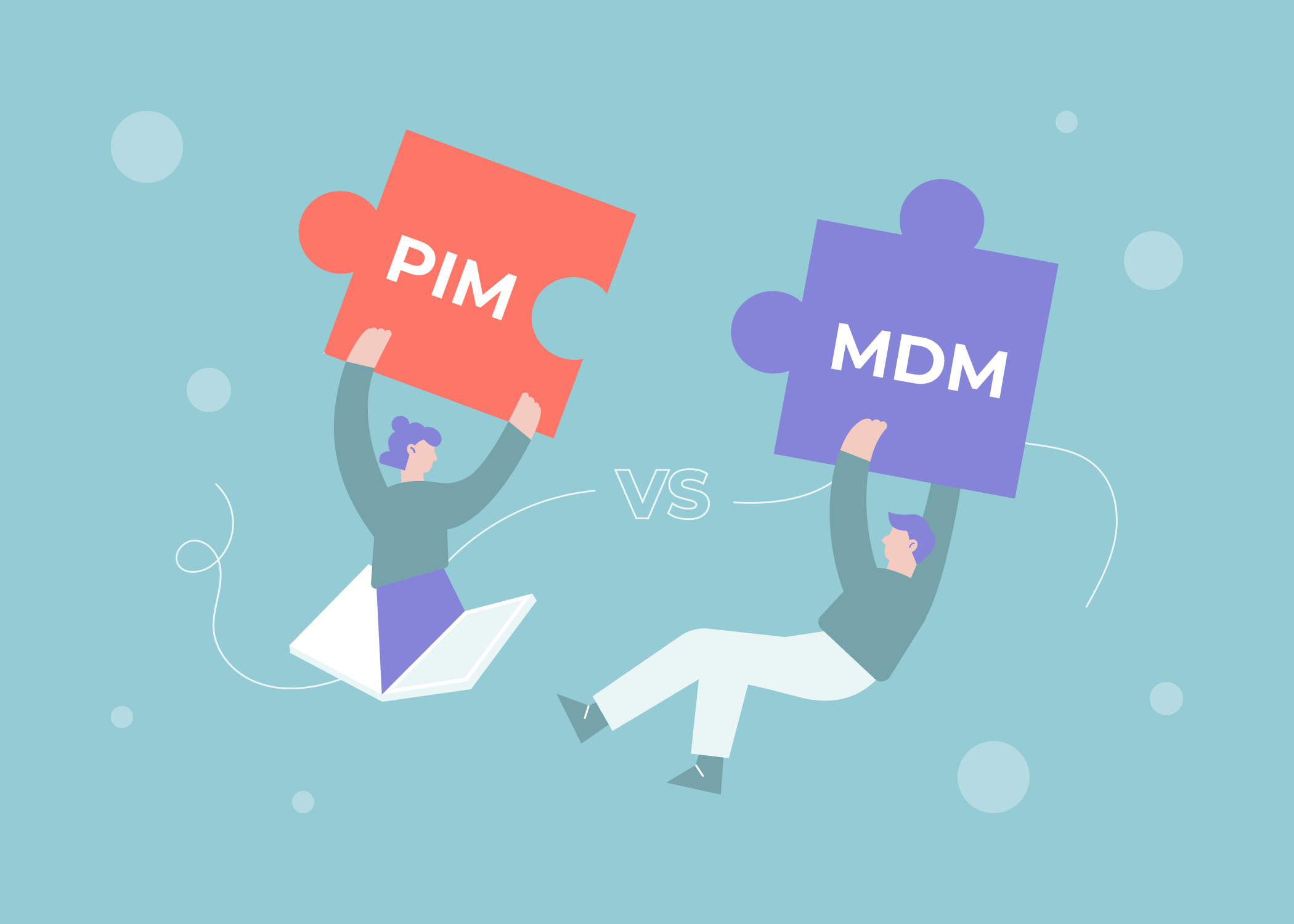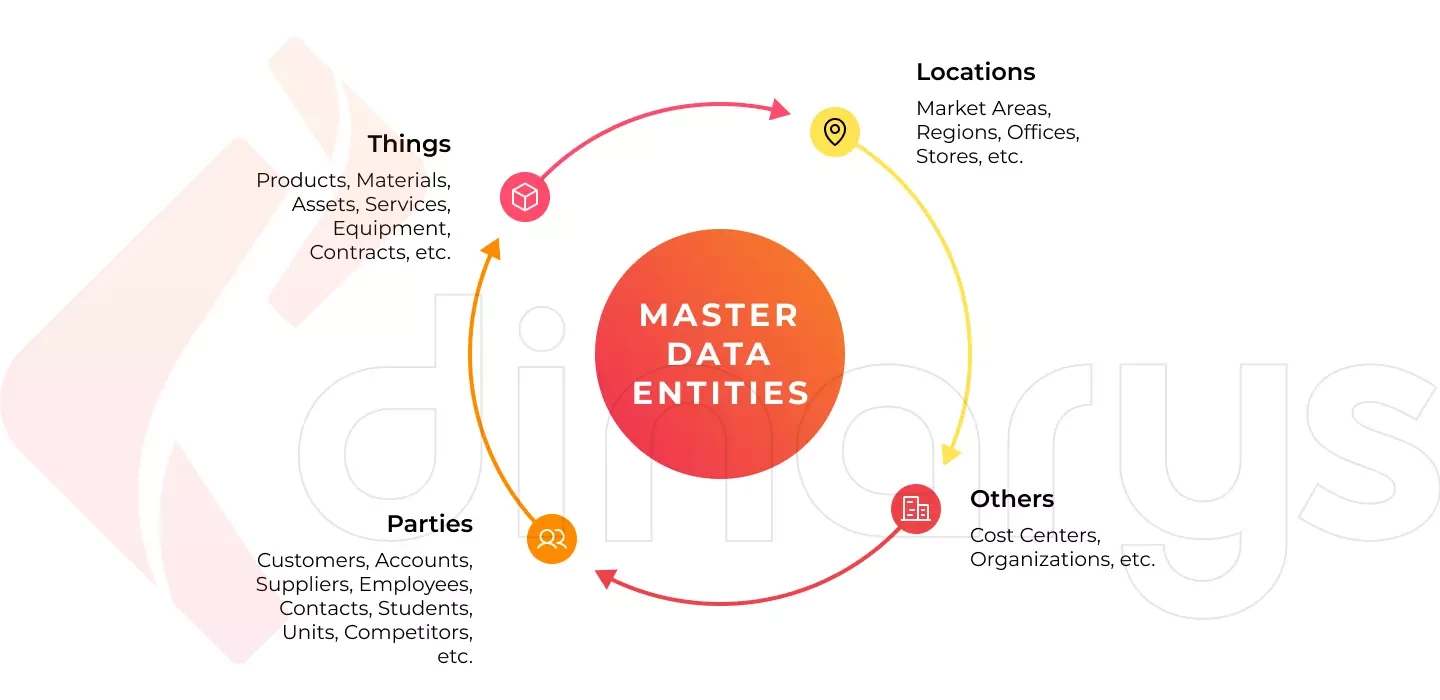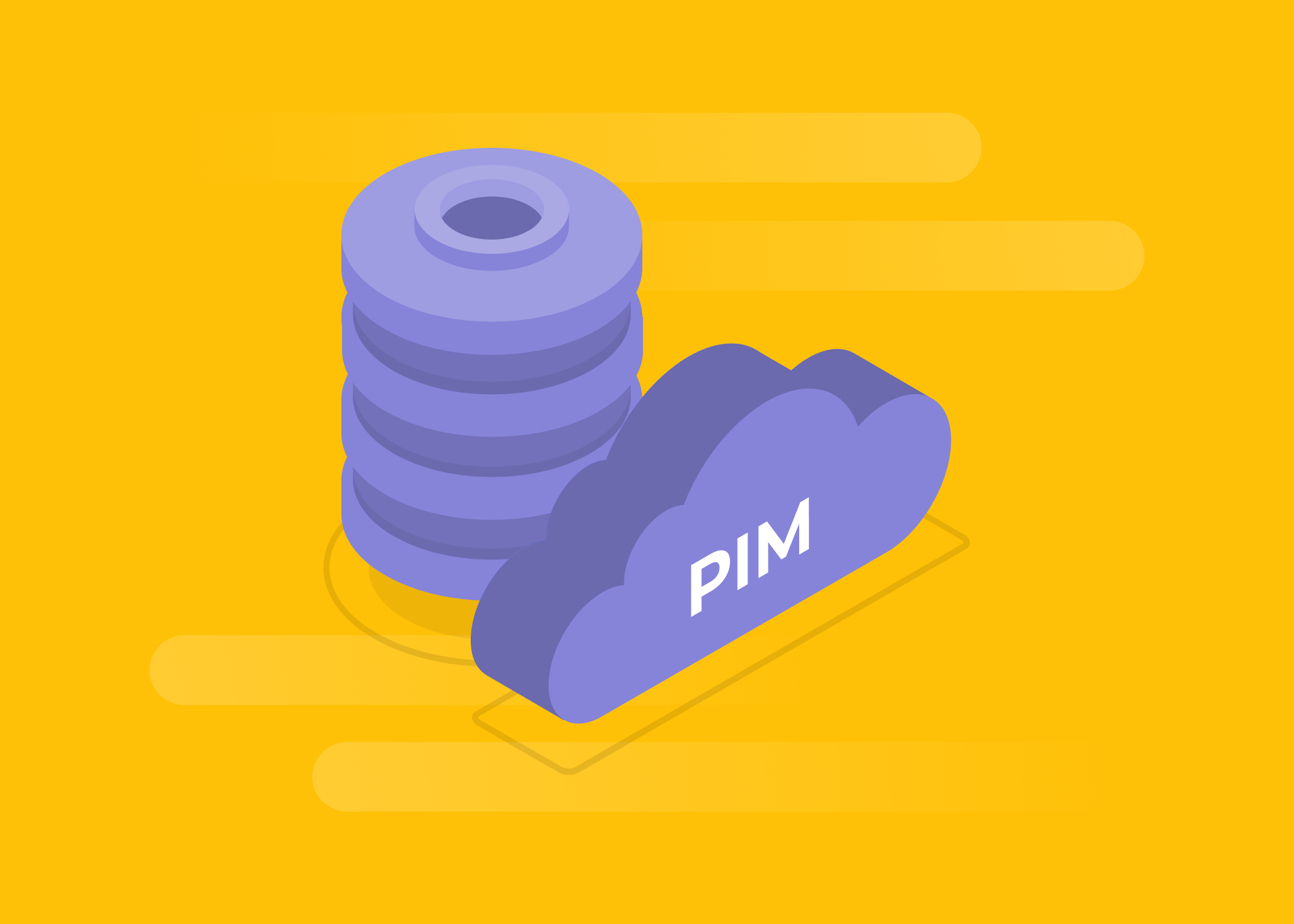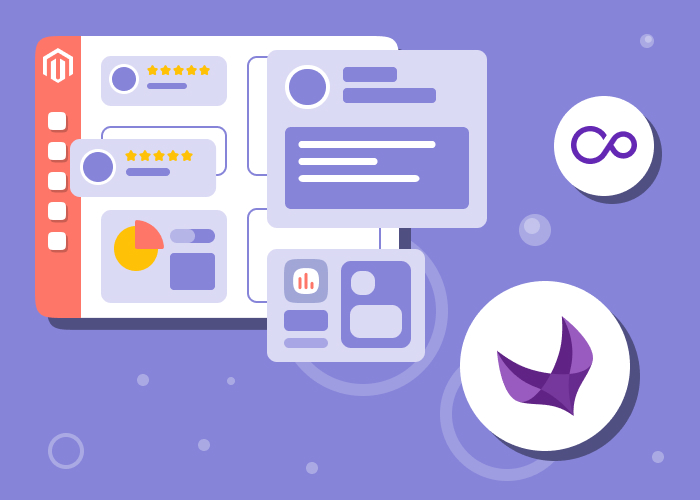Content
The Differences Between PIM and MDM

Time to read: 15 minutes
An omnichannel customer experience, a single data repository, integrated data applications, a single perspective of information, data governance, operational effectiveness, and automation. All of these features are associated with both master data management (MDM) and product information management (PIM). So how does MDM differ from PIM?
Many decision-makers struggle to distinguish between PIM and MDM. This article explains the differences between PIM and MDM to help you identify the solution that is right for your business.
What Is MDM?
Using a mix of systems and apps, MDM is a collection of procedures and tools that deliver synchronized data to enable efficient business operations. Using MDM, organizations can gather, match, clean, aggregate, and transmit correct and consistent master data to operational and analytical systems.
MDM solutions often manage data from various data domains, such as vendor, employee, customer, and financial data domains. Thus, MDM programs typically have a broad scope and demand substantial resources for both implementation and maintenance. Organizations may use an MDM system to support a variety of functional areas and commercial objectives.

Technology and apps are part of MDM as well as business clients, partners, and stakeholders. To execute processes, workflows, and operations, MDM cleans up, centralizes, and syncs corporate master data.
MDM enhances the daily operations of businesses by supporting the following tasks:
- Reducing the complexity related to globalization and growth
- Minimizing data ambiguities that may significantly affect business operations
- Enabling companies to alter data in one location while ensuring that the changes are reflected in all relevant locations
- Supplying more accurate data for analysis
- Ensuring data consistency across various platforms and tools
- Supporting compliance with regulations
What Is PIM?
PIM is a subset of MDM and is widely used to support merchandising and marketing. PIM focuses on supplying high-quality and accurate product information.
PIM often provides a simpler and more affordable implementation than a more ambitious and organization-wide MDM deployment because PIM is a solution that is business-led rather than IT-led.
PIM solutions provide the following three functions:
- Gather information. PIM gathers and centralizes product information from a variety of systems, including databases, ERPs, flat files, media platforms, and supplier portals. Prioritizing data sources and cleaning data enables seamless catalog integration.
- Data enrichment. After collecting product information, marketing and e-commerce teams can add media files, specific product descriptions, classifications, and usage information. By knowing which products are complete (i.e., the products with the data required for publishing) and which products still require enrichment, organizations can improve the quality of their data.
- Publish data. Using fully enriched products, data can be delivered across all sales channels, including e-commerce platforms, mobile applications, social networks, marketplaces, chatbots, and other AI-enhanced tools. In addition, with the correct solution, many PIM systems enable e-commerce businesses to produce stunning print catalogs easily and quickly with a single click.
By enhancing the client experience across several channels, PIM systems provide the following benefits to your bottom line:
- Increased conversion rates
- Decreased returns
- Reduced spending
- Increased sales and brand recognition
- Control of the complexity of the content

How do PIM and MDM differ?
A PIM system manages only product information, but an MDM system manages all company data. To develop and preserve product information for numerous channels, companies use the marketing tool of a PIM system. An MDM system manages data from all areas of a business, including information related to employees, clients, and other stakeholders.
Lets talk about itHave a project in mind?
A Comprehensive Comparison of PIM and MDM
Knowing the primary differences between PIM and MDM is crucial to understanding how the two systems relate to each other in the following areas:
- Product vs. enterprise
- External vs. internal data management
- Agility vs. complexity
Product vs. enterprise
PIM focuses on product data, but MDM manages data across the entire organization. The key distinction between the two is that PIM systems handle vast product catalogs and the data that they contain. On the other hand, MDM solutions control all of the master data for an organization.
Businesses, particularly those with a large number of items, frequently utilize PIM solutions to manage their product data efficiently. Businesses frequently combine PIM systems and e-commerce platforms to guarantee that the product information on their websites is correct and current.
Both PIM and MDM are crucial elements of company operations because they assist organizations in managing their master data and product data efficiently. To ensure operational effectiveness, accuracy, and competitiveness in today’s global market, companies must manage both types of data successfully.
External vs. internal data management
PIM handles data for external use, i.e., the product information that customers obtain and companies publish through various means. MDM manages internal and private data.
The main objective of MDM is to provide “one source of truth” by keeping a master record of all product data that may be used internally or externally by businesses. MDM enables departments within a company to develop a similar understanding of product data and use it for decision-making.
The main goal of PIM is to provide accurate, consistent, and enriched product information to guarantee that consumers always have access to current and accurate product information, regardless of where they shop.
While MDM focuses on managing internal procedures and data, PIM focuses on maintaining product information for external use. Thus, the key distinction between the two systems is that PIM prioritizes providing correct product data, but MDM prioritizes developing and managing a consistent product experience across all channels.
Agility vs. complexity
Typically, the target users of MDM systems are large organizations that have vast sales networks and numerous offices or sites spread across various areas and that have a strategy of encompassing multiple markets and regions. MDM is expensive, and consequently, it requires a high level of technical skill.
PIM solutions are available to every business, team, and professional and do not require extensive installation procedures or specialized technical skills. You can realize your ROI quickly with PIM because of its simple and personalized onboarding process, which allows you to begin immediately working with the data to enhance it.
Three Misconceptions About PIM and MDM
As an e-commerce consulting company with years of dedicated experience in developing e-commerce solutions, Dinarys aims to provide up-to-date information about e-commerce and to dispel misconceptions. The following section identifies three misconceptions about PIM and MDM and explains why they are incorrect.
1) You do not need PIM if you have MDM.
PIM and MDM were created to handle several functions. As previously mentioned, PIM manages product data, while MDM handles a sizable amount of data pertaining to clients, suppliers, partners, distributors, locations, workers, etc.
2) MDM requires one-time implementation.
You should think of MDM as a business concept rather than as a problem that needs to be solved. Business expansion often results in new requirements, operational procedures, mergers, and acquisitions.
The use of an adaptive MDM is crucial to adjusting to changing business needs. An effective MDM supports cross-functional and cross-departmental analysis and collaboration.
3) You do not need PIM or MDM if you have an ERP system.
An ERP (enterprise resource planning) system is a centralized database that manages front-office, back-office, and financial business data, and it meets the requirements of various systems, including customer relationship management, business intelligence, and supply chain management.
For additional information, read “ERP for E-Commerce Integration: Full-Step Guide.”
Unlike MDM solutions, an ERP system cannot establish a relationship between many business entities, and unlike PIM solutions, it cannot assist businesses in making smart business decisions by maintaining product data. Furthermore, ERP lacks functionality when compared to PIM and MDM. For example, ERP cannot enable enterprise master data governance, data enrichment, or data workflow, and it does not always provide the most recent data. Moreover, ERP is unable to manage media assets.
Lets talk about itHave a project in mind?
PIM vs. MDM: Which Is Right for Your Business?
Using MDM and PIM solutions, which offer comparable features, can create a single source of information for businesses by organizing vital product data. This unified source of information keeps everyone in the loop and provides a strong foundation for important business decisions. However, the question still remains: Which solution is best for you?
You need a PIM if your main priority is boosting sales, introducing more product SKUs, or entering new channels or markets. Compared to an enterprise-wide MDM system, this focused business-centric marketing solution delivers a faster solution and ROI.
On the other hand, MDM may be more suitable if your purpose is to manage other data domains, such as customer, financial, or geographical data domains, or if you consider product data as just another data domain. MDM may also be a good choice if you have enough resources and time for deployment.
For more detailed information, review “Magento PIM Integration—Full Guide.”
Conclusion
PIM and MDM provide complementary solutions for processing and managing your product data or information. However, choosing PIM or MDM as the ideal data management solution for your business requires careful consideration of your objectives.
You should choose PIM if you require a business-centric marketing solution to help your marketing and merchandising teams boost sales, improve the customer experience, and better manage digital assets.
Use our e-commerce consulting services to help make your decision and fully automate your business data management!
Let professionals meet your challenge
Our certified specialists will find the most optimal solution for your business.




